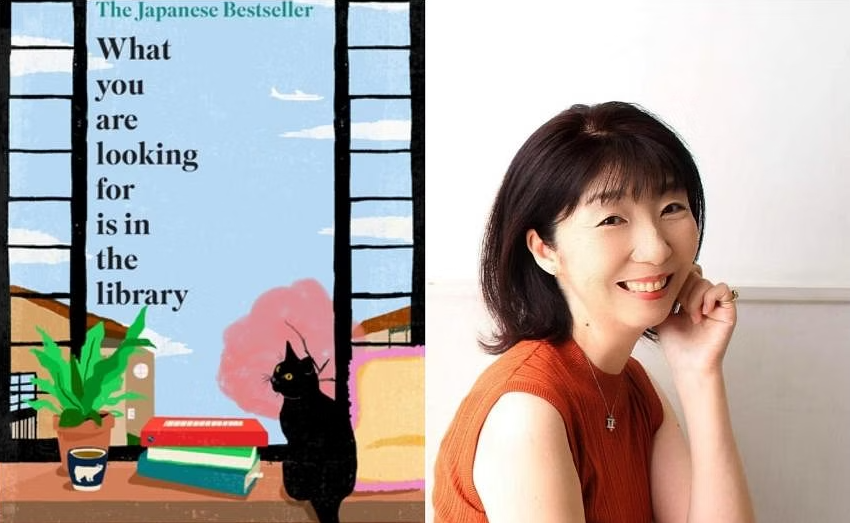
Michiko Aoyama’s What You Are Looking For Is In The Library. Doubleday, Michiko Aoyama
“What are you looking for?”
This is the question that the seemingly mystical librarian Sayuri Komachi poses to five very different people who are all, in some way, lost.
Michiko Aoyama’s 2020 novel, What You Are Looking For Is in the Library, traces the stories of five ordinary people in modern-day Tokyo, all of whom are searching for something. These characters lead very different lives, but they are all drawn to a small library located in the community center of their Tokyo Suburb. There, they meet the fearsome, unmoving librarian of the community center: Ms. Komachi, who resembles a fairy-tale witch characteristic of a Studio Ghibli movie. Whether it is a magazine editor struggling to balance motherhood and work, a disillusioned art major, or a newly retired cookie factory worker, each character comes to the library and leaves with a book recommendation (and a felted trinket, courtesy of Ms. Komachi) that will change their lives forever.
Translated from the original Japanese by Alison Watts, this is the first of Aoyama’s many celebrated novels available to English readers. Aoyama’s distinct voice shines through the five chapters, manifesting in a light and comfortable tone, resembling a conversation with your best friend. These characters are smart and snappy; they tell it like it is, a welcome diversion from the flowery, descriptor-heavy prose I’m used to reading.
Don’t be deceived by the casual atmosphere, though. This book explores the intricacies of life and dreams with such tender care that you’ll be taken aback. I certainly was—at the sheer empathy that is steeped in these pages. This book slips you into its characters’ minds and dreams effortlessly. It’s easy to become invested in these characters’ lives. My heart ached for their troubles and pined for their happiness—whether that was for Tomoka, a young retail worker, to get unstuck in life, or for Ryo, an anxious accountant, to work up the courage to pursue his love for antiques—and when each character’s story ended and the next began, it was as if I were saying goodbye to an old friend.
The beauty of these five stories is how ordinary they are. These people are not superheroes; they’re not saving the world (at least in the conventional sense). They are office workers and comic book fans and mothers and fathers. There’s something beautiful about the familiarity of these characters’ lives. Real life is not always an exciting adventure, but this book shows how even the most ordinary of days can become meaningful in their own ways. Aoyama has created an ode to the beauty of the little things, like how only a reader can understand how these five characters, complete strangers, can lead lives that are linked in many unexpected ways. Still, Aoyama’s characters are far from ordinary. Faced with the hardships of ordinary life, they are just like the rest of us—they get stuck, unmotivated, uninspired. But they keep going. They are empathetic and communicative. They never stop thinking and searching, and eventually, they are led to the library, and something resembling inner peace. I believe that these characters represent the best qualities in all of us. Maybe we all have the potential for a happy ending, if only we look in the right places: like a library.
